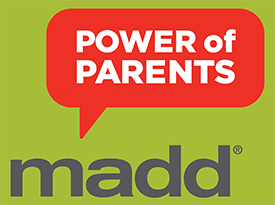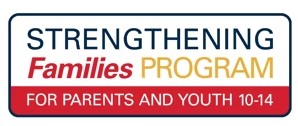Alcohol Abuse and Prevention Education
Whether you agree with the law or not, no one is allowed to drink alcohol until they reach 21. What you may not realize, is there are really good reasons the legal drinking age is 21. In just the past few decades, we’ve learned much more about alcohol and the negative affects on young brains and bodies.
Alcohol is the most frequently used of all intoxicating substances. It is also usually the first drug that young people experiment with. Alcohol use precedes the use of marijuana or other hard drugs by an average of 14 months. Since young people tend to try it first, it is really important to understand what the dangers really are.
During adolescence, the brain goes through dynamic change. Alcohol consumption can seriously damage long and short-term growth processes. Frontal lobe development and the refinement of pathways and connections continue until age 16, and a high rate of energy is used as the brain matures until the mid 20s*. Damage from alcohol at this time can be long-term and irreversible. In addition, short-term or moderate drinking impairs learning and memory far more in youth than adults. Adolescents only need to drink half as much to suffer the same negative effects.**

- Research shows that youth who drink can have a significant reduction in learning and memory.***
- Studies show significant neuro-psychological deficits exist in 15-16 year-olds with histories of extensive alcohol use.
- Adolescent drinkers perform worse in school, are more likely to fall behind and have an increased risk of social problems, depression, suicidal thoughts and violence.
- Alcohol also affects the sleep cycle, resulting in impaired learning and memory, as well as disrupted release of hormones necessary for growth and maturation.
- Teens who use alcohol are more likely to become sexually active at an early age, have sexual intercourse more often, and have more unprotected sex than teens that do not drink.
Get the facts, the tools and the advice you need to start talking about alcohol
Visit SAMHSA.gov for more information on underage drinking.
* SAMHSA, Alcohol and the Developing Brain
**Johnson, et. Al., 2006 Monitoring the Future National Survey Results on Drug Use.
*** AMA Report, Harmful Consequences of Alcohol Use on the Brains of Children, Adolescents, and College Students
Tips
- Develop open communication with your child where you encourage conversation, ask questions and actively listen without lecturing or getting upset.
- Show you care so they know they are important to you.
- Reinforce the positive by appreciating their current efforts, accomplishments and good choices.
- Respect is a two-way street, so celebrate your teen’s individuality and understand their growing need for independence.
- Have family rules about teen drinking with clear, realistic expectations and appropriate consequences.
- Set a good example because you are the most important role model in your child’s life.
The following video gives examples of ways to start the conversation:

We encourage all parents to review the entire Power of Parents: It’s Your Influence® handbook even if they have never talked with their child or they have talked with their child about the dangers of drinking alcohol. MADD recommends parents to use the parts that are helpful to them and their family and by doing so, “can substantially reduce the chance their son or daughter will drink before the age of 21”.
Signs
IT’S IMPORTANT TO PAY ATTENTION.
Middle School and High School children are going through lots of changes. One day, they want to cuddle with you, and the next they’re acting like you’re from another planet. It is important to watch for signs that your child might be experimenting with alcohol or drugs.
- Drop in school performance or increase in problems at school.
- An increase in inappropriate anger, irritability or sullenness.
- They are in a trance-link state.
- You smell an odor of alcohol, gasoline or cleaning fluids.
- You notice an increase in the use of room deodorizers, body deodorant, after shave lotion, perfume, mouthwash or breath mints.
- Empty cough syrup bottles.
- They’ve developed an “I don’t care” attitude.
- You find paint or stains on their clothing or body.
- They frequently use eye drops.
- You find drug-related paraphernalia like pacifiers, light sticks, lollipops, empty aerosol cans, glue tubes, pipes, rolled-up folding money, razor blades, empty cough syrup bottles and more.
- Loss of interest in previously-enjoyed activities.
- Change in friends, secretive about friends or part of a group that seems to drink or use drugs.
- Acting like a different person.
- Skipping school.
- Stealing from family members.
- Reduced memory, concentration or attention span.
- Lying or avoiding talking about where they’ve been.
- Striking changes in personal habits – either careless or excessively neat.
- Significant weight gain or loss.
Statistics
Did you know…
- At least half of high school students in Rio Grande County drank alcohol within 30 days prior to taking the 2012 Healthy Kids Colorado Survey.
- Drinking alcohol is more than experimental. In Rio Grande County, 44% of 12th graders report binge drinking at least once within 30 days prior to taking the 2012 Healthy Kids Colorado Survey.
- The perceived risk of alcohol use is lower for middle school students in Rio Grande County than for middle school students across the state according to the 2012 Healthy Kids Colorado Survey.
*Source: 2006, 2007, 2008, 2009, 2010, 2012 Healthy Kids Colorado Survey
Resources
If you are worried a young person may be using, pay attention to your intuition and take action. When you look the other way, or avoid thinking or talking about it, you send the message that it’s ok. Click here for a list of local and online organizations for more help and resources.





